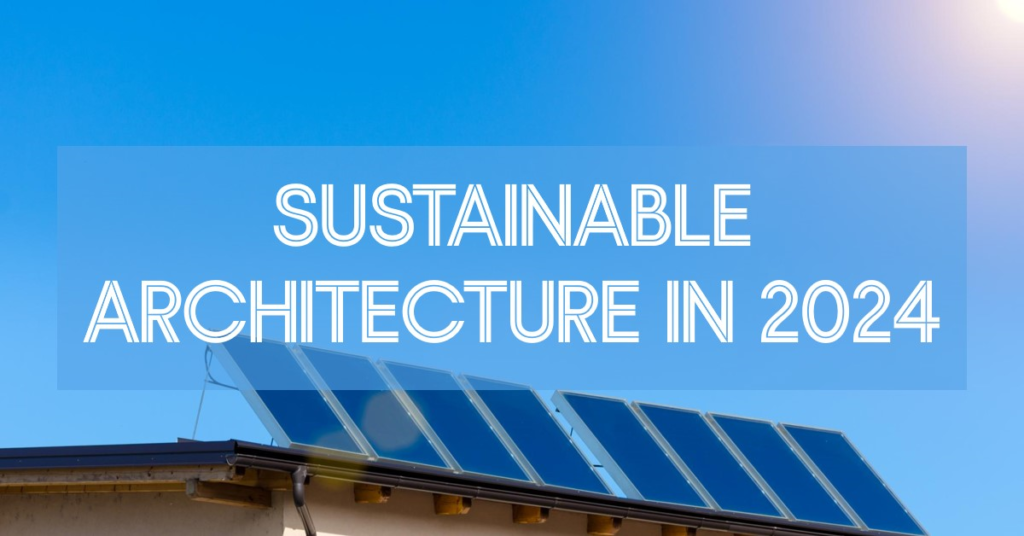The architectural landscape is undergoing a significant shift. Driven by a growing urgency to address climate change and resource depletion, sustainable design practices are no longer a niche concern but a fundamental consideration for architectural services in 2024. This shift is not just about adhering to trends; it’s about creating buildings that are not only aesthetically pleasing but also environmentally responsible and resource-efficient.
According to a recent Dodge Construction Outlook report, green building projects in the US are expected to reach a staggering $416 billion by 2025 [1]. This exponential growth reflects a collective recognition of the long-term benefits of sustainable design, not just for the environment but also for building owners and occupants.
So, how exactly are these sustainable design practices influencing architectural services? Let’s delve into some of the most notable advancements:
- Life Cycle Thinking: A Holistic Approach
Gone are the days when architects solely focused on the aesthetics and functionality of a building during the design phase. Modern architectural services embrace a life cycle thinking approach, considering the environmental impact of a structure throughout its entire lifespan. This includes:
Material Selection: Opting for recycled or locally sourced materials with low embodied energy (the energy required to extract, process, transport, and manufacture the material) reduces the building’s carbon footprint.
Energy Efficiency: Incorporating passive design strategies like natural ventilation, proper solar orientation, and high-performance windows minimizes reliance on conventional heating and cooling systems.
Water Conservation: Implementing rainwater harvesting systems, low-flow fixtures, and xeriscaping (landscaping with drought-tolerant plants) reduces water usage and promotes responsible water management.
End-of-Life Considerations: Architectural services now factor in the deconstruction or disassembly of a building at the design stage. This allows for the reuse of materials, further minimizing environmental impact.
- Embracing Technology for Sustainable Design
Technological advancements are playing a crucial role in optimizing sustainable design practices. Building Information Modeling (BIM) software allows architects to simulate a building’s performance before construction, enabling them to identify and address potential energy inefficiencies. Additionally, advanced software tools can analyze solar radiation patterns and wind flow to optimize natural ventilation and passive heating strategies.
- The Rise of Biophilic Design
Biophilic design, which integrates elements of nature into the built environment, is gaining significant traction. Studies have shown that incorporating natural light, greenery, and natural materials can improve occupant well-being, increase productivity, and even reduce stress levels [2]. Architectural services are now actively incorporating biophilic design principles, creating healthier and more sustainable living and working spaces.
- Adaptive Reuse and Renovation
With a growing focus on reducing embodied energy and minimizing construction waste, architectural services are increasingly exploring adaptive reuse projects. This involves repurposing existing buildings for new functionalities, breathing new life into structures while minimizing environmental impact. This approach not only promotes sustainability but also helps preserve a city’s historical and cultural heritage.
- Collaboration is Key
Sustainable design is not a solitary pursuit. Architectural services are fostering closer collaboration with Structural Engineering Services, mechanical, electrical, and plumbing (MEP) engineers, and sustainability consultants during the design process. This collaborative approach ensures that sustainability is integrated seamlessly throughout the project lifecycle, resulting in truly eco-friendly and resource-efficient structures. Here at Risentech, for instance, our team of experienced structural engineers can collaborate with architectural services to ensure that sustainable design choices are structurally sound and can be efficiently implemented.
Moving Forward: Embracing a Sustainable Future
The architectural services industry is at the forefront of building a greener future. By embracing sustainable design practices and fostering collaboration, architects are creating buildings that are not only beautiful and functional but also environmentally responsible and contribute to the well-being of occupants.
FAQs
What are some of the benefits of sustainable design for building owners?
Sustainable buildings often boast lower operating costs due to increased energy and water efficiency. Additionally, they may attract higher rental rates and property values due to their environmental credentials.
How can architects stay up-to-date on the latest sustainable design practices?
Numerous resources are available, including professional associations like the American Institute of Architects (AIA) and the USGBC (U.S. Green Building Council) which offer educational programs and certifications.
What are some of the challenges associated with sustainable design?
Initial investment costs for sustainable materials and technologies can be higher. Additionally, integrating sustainability seamlessly into the design process can require a shift in mindset and collaboration among different project stakeholders.
How can architectural services get involved in promoting sustainable design?
Architects can play a crucial role in educating clients about the benefits of sustainable design. Additionally, advocating for stricter green building codes and policies can create a more supportive environment for sustainable construction practices.
Conclusion
The future of architecture is undeniably sustainable. By embracing life cycle thinking, leveraging technology, and collaborating with various stakeholders, architectural services are leading the charge towards a greener built environment. As the demand for sustainable design continues to rise, the question remains: how will architectural services continue to innovate and push the boundaries of what’s possible? Will net-zero energy buildings become the norm? Will advancements in biomimicry inspire entirely new design approaches? The future of sustainable design is bright, and architectural services are at the forefront of shaping it.
Also know Understanding the Onsite Services of Onsite Construction.
